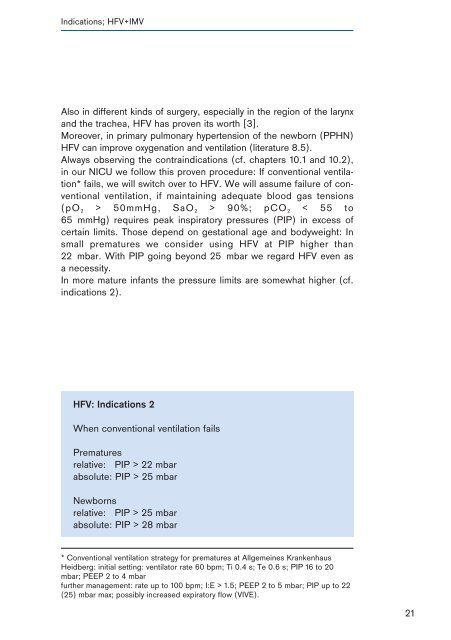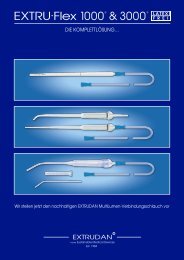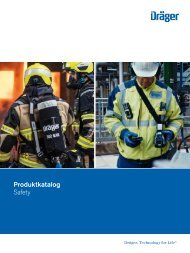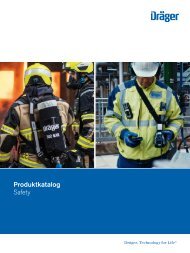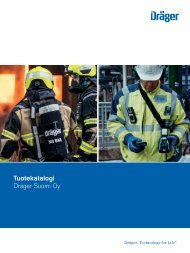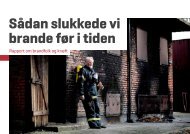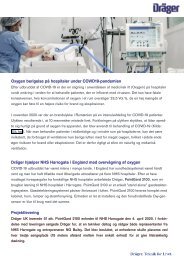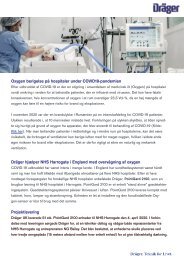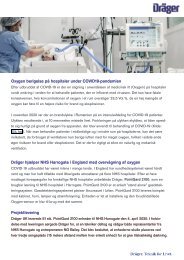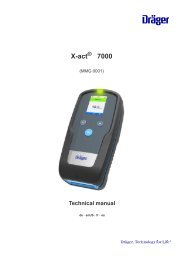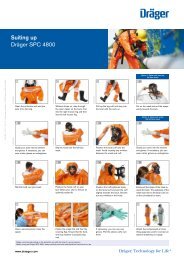High-Frequency Ventilation- Basics and Practical Applications
You also want an ePaper? Increase the reach of your titles
YUMPU automatically turns print PDFs into web optimized ePapers that Google loves.
Indications; HFV+IMV<br />
Also in different kinds of surgery, especially in the region of the larynx<br />
<strong>and</strong> the trachea, HFV has proven its worth [3].<br />
Moreover, in primary pulmonary hypertension of the newborn (PPHN)<br />
HFV can improve oxygenation <strong>and</strong> ventilation (literature 8.5).<br />
Always observing the contraindications (cf. chapters 10.1 <strong>and</strong> 10.2),<br />
in our NICU we follow this proven procedure: If conventional ventilation*<br />
fails, we will switch over to HFV. We will assume failure of conventional<br />
ventilation, if maintaining adequate blood gas tensions<br />
(pO 2 > 50mmHg, SaO 2 > 90%; pCO 2 < 55 to<br />
65 mmHg) requires peak inspiratory pressures (PIP) in excess of<br />
certain limits. Those depend on gestational age <strong>and</strong> bodyweight: In<br />
small prematures we consider using HFV at PIP higher than<br />
22 mbar. With PIP going beyond 25 mbar we regard HFV even as<br />
a necessity.<br />
In more mature infants the pressure limits are somewhat higher (cf.<br />
indications 2).<br />
HFV: Indications 2<br />
When conventional ventilation fails<br />
Prematures<br />
relative: PIP > 22 mbar<br />
absolute: PIP > 25 mbar<br />
Newborns<br />
relative: PIP > 25 mbar<br />
absolute: PIP > 28 mbar<br />
* Conventional ventilation strategy for prematures at Allgemeines Krankenhaus<br />
Heidberg: initial setting: ventilator rate 60 bpm; Ti 0.4 s; Te 0.6 s; PIP 16 to 20<br />
mbar; PEEP 2 to 4 mbar<br />
further management: rate up to 100 bpm; I:E > 1.5; PEEP 2 to 5 mbar; PIP up to 22<br />
(25) mbar max; possibly increased expiratory flow (VIVE).<br />
21


